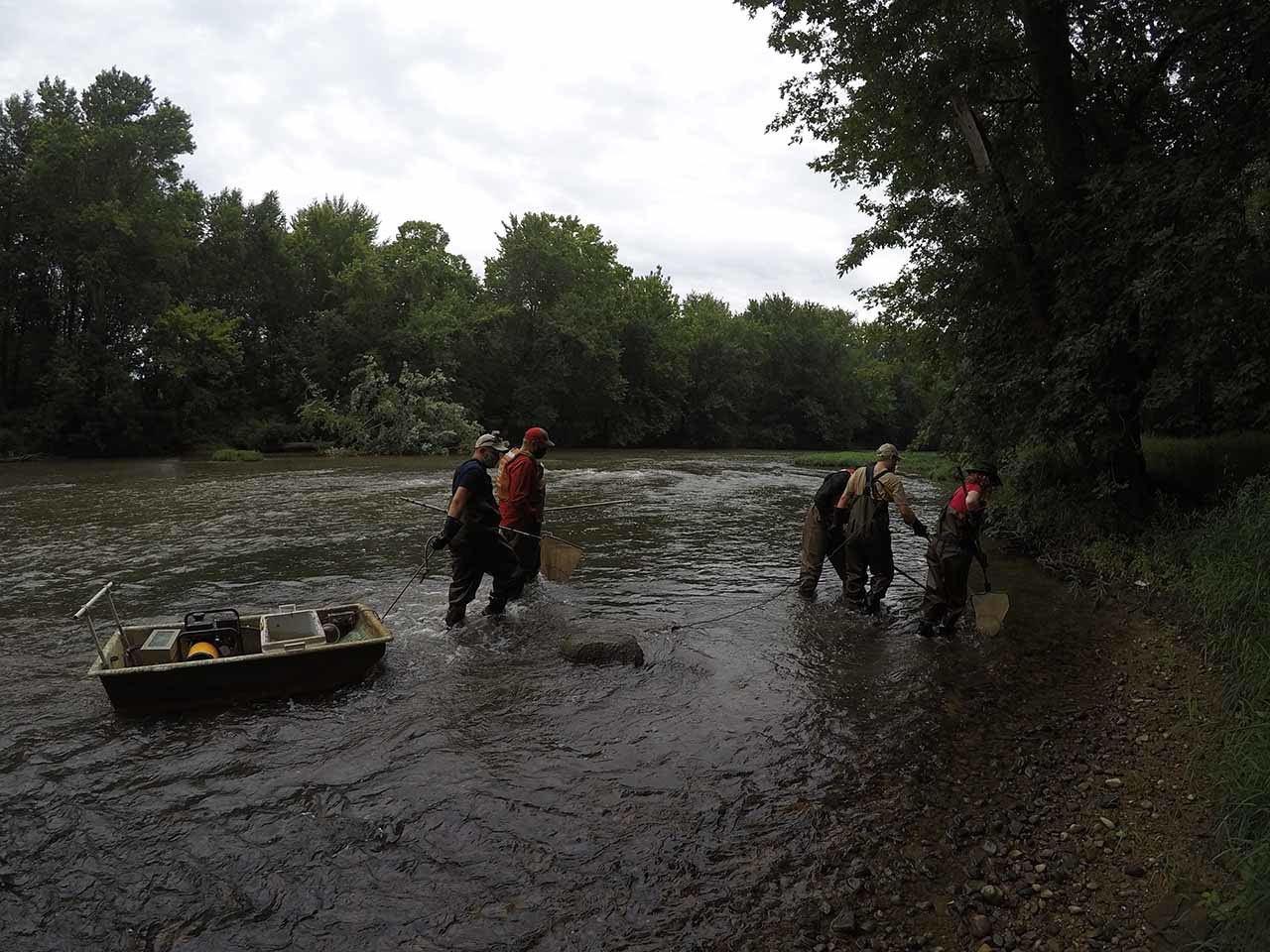From the Indiana Department of Natural Resources:
Fish community sampling is being conducted by the Indiana Department of Natural Resources (DNR) fisheries biologists, Indiana Department of Environmental Management’s (IDEM) Office of Water Quality and the Muncie Sanitary District’s Bureau of Water Quality (BWQ) over the next couple of months for the White River Mainstem Project.

The White River Mainstem Project is a collaborative effort to sample the West Fork White River and White River mainstem from its headwaters to its confluence with the Wabash River. This project is the first of its kind for Indiana, with multiple agencies working together to extensively sample an entire river. It will also be the most comprehensive sampling of the White River that has been done.
Over the coming months, water quality, fish communities, and benthic macroinvertebrates (water insects) will be sampled at 63 sites along the entire 356 miles. Biologists will evaluate different aspects of these rivers, which will help the agencies better understand the water quality and the rivers’ ability to support healthy and diverse fish and macroinvertebrate communities. Macroinvertebrates serve as indicators of water quality and overall stream health; because they are at the bottom of the food chain, macroinvertebrates are more sensitive to environmental stress and can influence the fish that feed on them.
DNR will also evaluate sport fishing opportunities for anglers during sampling. Sport fish species like smallmouth bass, spotted bass and channel catfish will have additional information collected (such as age and weight) to provide detailed information about fishing opportunities along the river. Reports will be made available at on.IN.gov/where2fish and on the project’s StoryMap: idem.IN.gov/WhiteRiverProject.
IDEM will use monitoring data to provide a comprehensive assessment of the White River’s ability to support aquatic life to the U.S. Environmental Protection Agency. This will also tie into BWQ’s long-term monitoring project to investigate changes in water quality and fish and macroinvertebrate communities from the headwaters in Winchester to Anderson.
The data provided by this study will be essential for future recommendations to improve the river’s health for the fish, wildlife, and human communities that depend on it.
For more information about this project, please visit idem.IN.gov/WhiteRiverProject.
Photo by Brandon Montrone from Pexels
